World Rhino Day
Each year World Rhino Day falls on September 22nd – a date on which conservationists, naturalists and travellers are particularly cognisant of the severe threats that rhinos face.
These delightfully curious looking ungulates are a keystone species, meaning that they vital to maintaining the balance of their ecosystems. Once widespread, with more than 500,000 roaming across much of Asia, Africa and Europe in the early 20th century, their numbers have dropped drastically and global numbers across the five species were estimated to be around 27,000 individuals (1) at the end of 2022 by the IUCN African Rhino Specialist Group (AfRSG). The species are as follows: Sumatran, Javan, Black, Greater one-horned and White. In Africa we are fortunate to have the White (Ceratotherium simum) and the Black (Diceros bicornis).
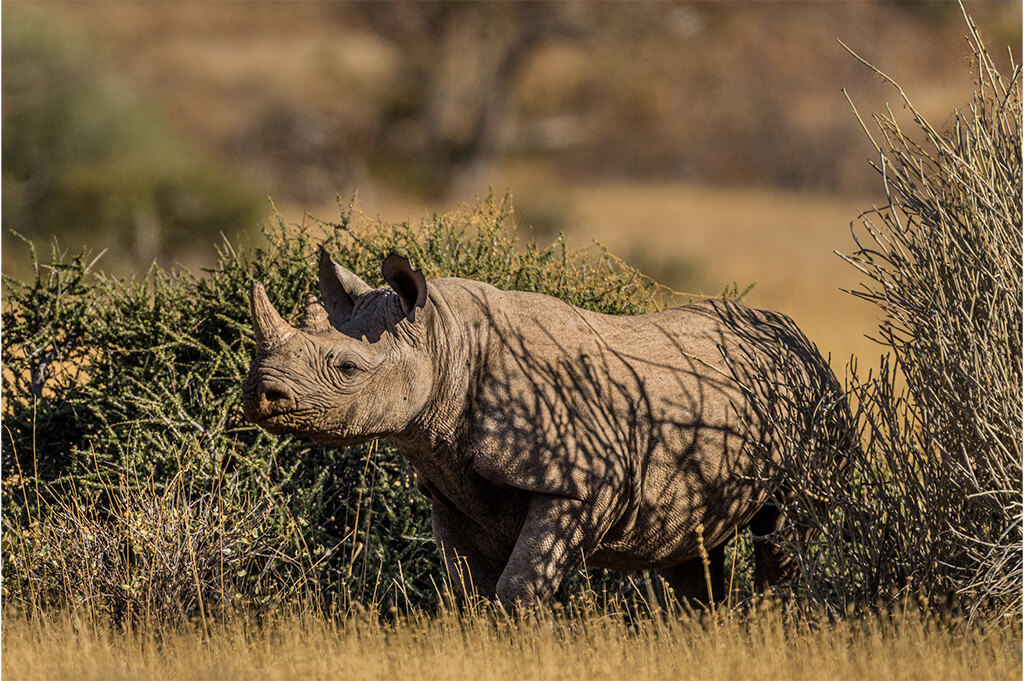
Poaching and habitat loss are both significant contributing factors in the decline of rhino. The Black is classified as Critically Endangered having seen their population plummet from 70,000 in 1970 to around 2,410 in 1995 – a decline of 96%. Since then, conservation efforts have seen the population rise to more than 6,100 individuals and their geographic range increase. The White meanwhile is classified by the IUCN as Near Threatened. There are two subspecies of White rhino called the Southern white rhino and the Northern white rhino. Back in the early 1900s there were between 50 and 100 of the Southern left in the wild, however in a conservation success story, their numbers have increased to almost 16,000; their Northern counterparts sadly are down to just two females, likely spelling the end of their chapter. (2)
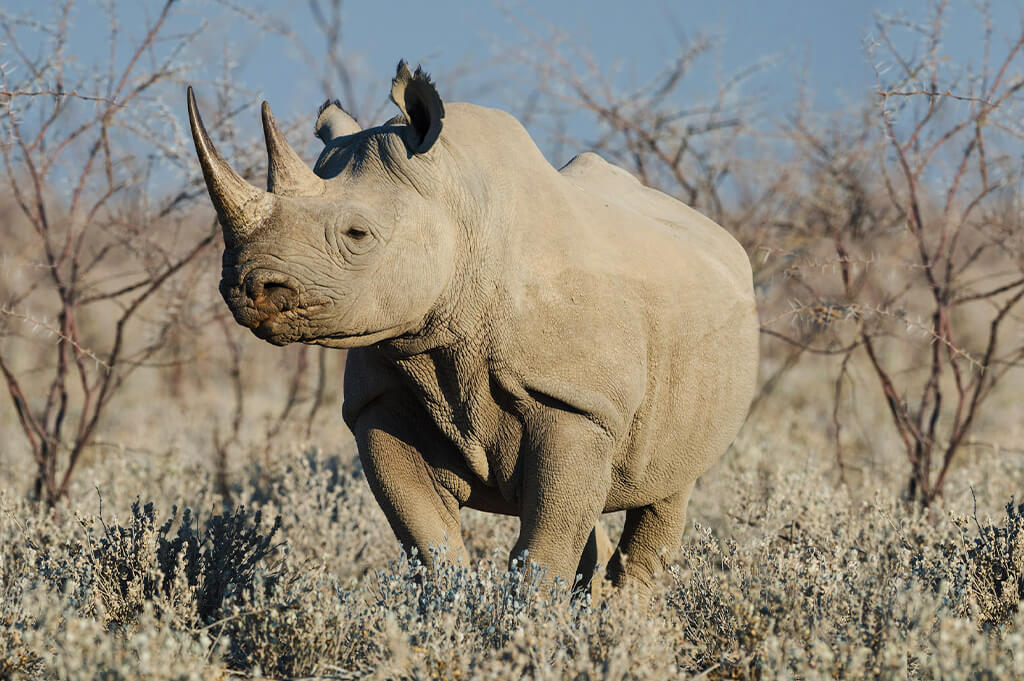
In the world of conservation, successes are all too precious and it’s easy to become disheartened by losses such as that of the Northern white rhino, but we strive to preserve what we can through awareness, change and making a difference.
Our rhino conservation efforts are focused on Namibia. Here we’re fortunate enough to share regular sightings of rhino with our guests. It might seem strange that we publicise the presence of such a vulnerable species, but we never give numbers nor specific locations and we have gone to extraordinary efforts to keep them protected on the ground. In order to protect the Etosha Heights Private Reserve rhinos from the very significant threat of poaching, we have an anti-poaching camp in the reserve as well as a dedicated team who are devoted to their safeguarding as well as preventing illegal hunting. An intensive training programme prepares our anti-poaching team for the task, and they’re on the ground 24/7. They’re the best of the best, but we don’t stop there. Our team of superhumans is backed up by new state of the art anti-poaching surveillance technology to detect threats and monitor the rhinos.
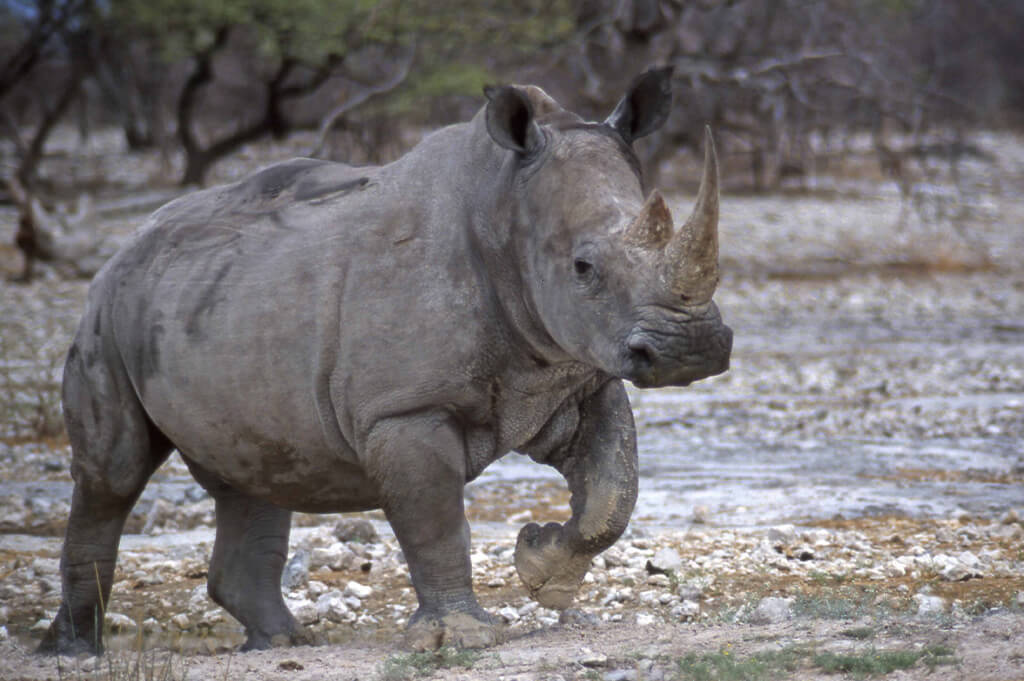
Furthermore, we are supporting the Save the Rhino Trust Rhino Translocation (SRT) project. SRT works to protect the largest population of free ranging black rhino anywhere on Earth. They have been working in the country’s rugged Kunene region for over 40 years and they engage and empower local people in rhino protection efforts. This is a central piece to their community-based rhino protection model under partnership with the Ministry of Environment, Forestry and Tourism (MEFT).
Following a poaching incident a few years ago in an undisclosed area, the last two male rhinos dispersed, likely driven by the absence of females. Recently, MEFT approved plans to reintroduce rhinos to this area, pending a comprehensive habitat assessment and necessary preparatory measures. We are committed to supporting both the reintroduction efforts and the long-term protection of the rhinos once they return to their natural habitat.
![]()
In the Sesfontein Conservancy, close to Hoanib Valley Camp we have made an ongoing commitment to assist the community Rhino Rangers with equipment and food rations.
We can’t think of anything more worthwhile than our conservation and community efforts, in fact they’re the very reason that Natural Selection was founded.
The ongoing commitment takes more than a dedicated team though – somehow it has to be funded. To give an idea of what it all costs, $350 pays one anti-poaching ranger for a month, $500 buys one camera trap to allow us to monitor wildlife, $715 covers the cost of a Garmin InReach Device and pays for the annual subscription, $2,225 pays for one high tech outdoor surveillance camera, $5,300 will purchase a live feed camera trap for real time incursion and incident monitoring, while $9,700 enables us to purchase a thermal drone.
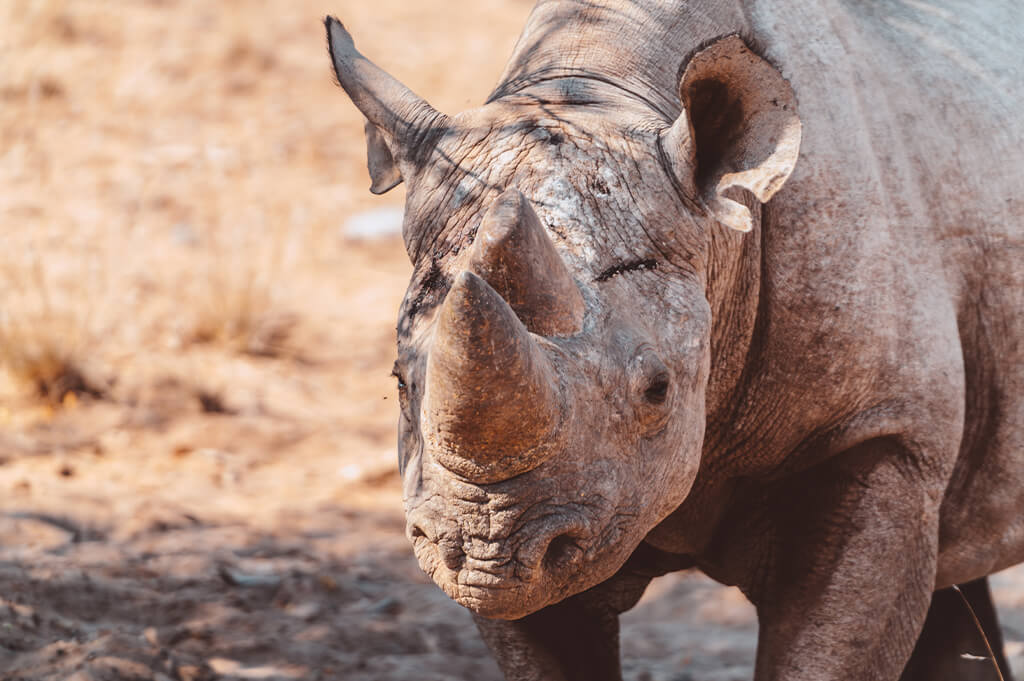
We keep making a difference through three different streams of revenue. Firstly, we contribute 1.5% of each guest’s stay in our lodges towards community based wildlife conservation, wildlife research and monitoring, and conservation education. This is managed by an independent non-profit organisation. Secondly, we have a per person per night conservation, community and reserve fee that funds land protection, local village upliftment and reserve management. This secures funds that are crucial for protecting wildlife, wildlife habitat and supporting communities in individual areas of operation. Finally, we are hugely fortunate to have donors who support key projects through the Natural Selection Foundation.
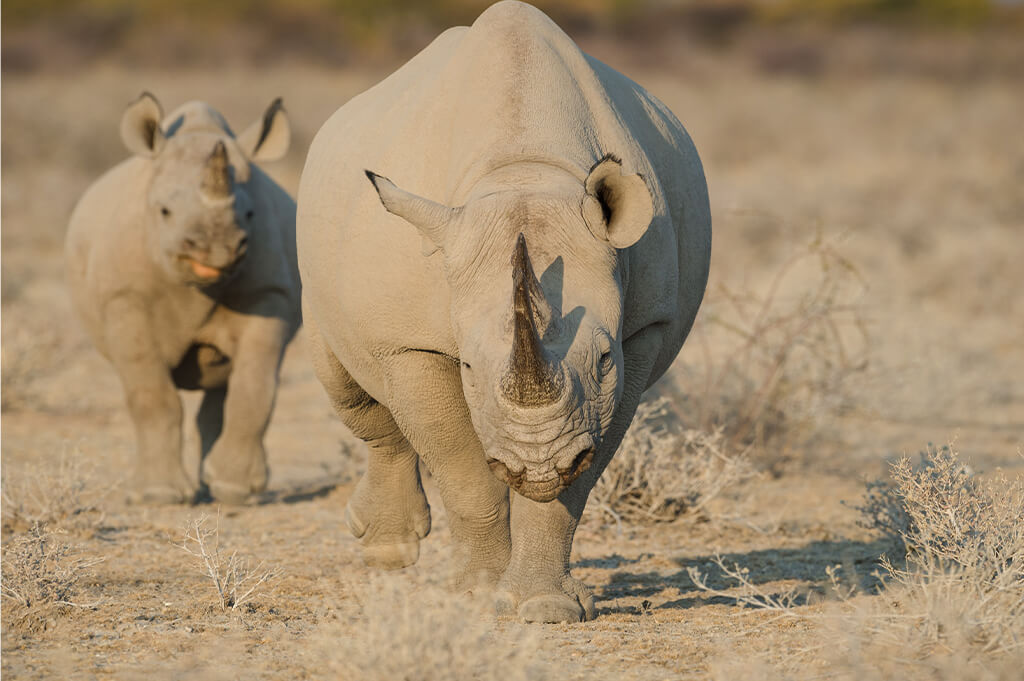
Because of these efforts, guests at Hoanib Valley Camp and our Etosha Heights Private Reserve properties (Safarihoek, Etosha Mountain Lodge and Safari House) can head out to track rhinos and see them with the hope that they won’t be the last generation to do so. Knowing that their trip is making a real difference in the sphere of rhino conservation. If you feel able to contribute towards the preservation of rhinos, please visit our donation page here https://www.naturalselectionfoundation.org/donate/
- Data sourced from Save The Rhino
https://www.savetherhino.org/africa/world-rhino-day-2023-new-numbers-and-challenges/
- Data sourced from Save The Rhino











































